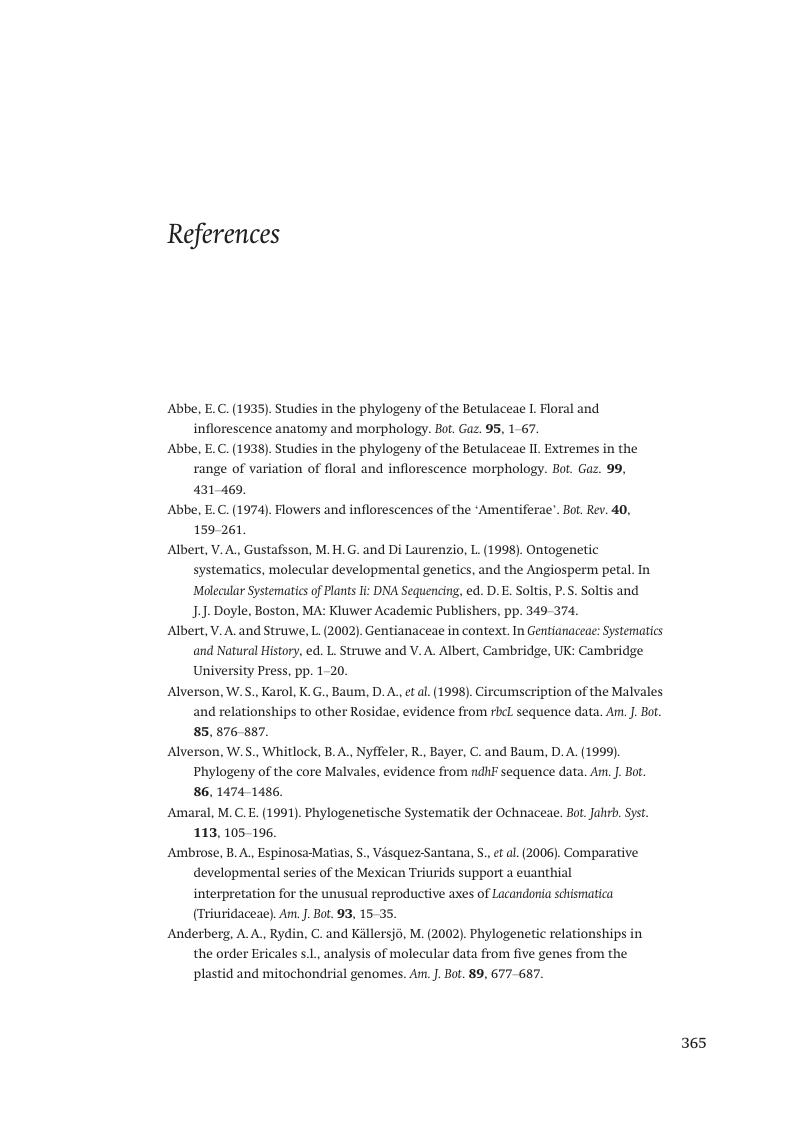References
Published online by Cambridge University Press: 24 January 2011
Summary

- Type
- Chapter
- Information
- Floral DiagramsAn Aid to Understanding Flower Morphology and Evolution, pp. 365 - 402Publisher: Cambridge University PressPrint publication year: 2010



